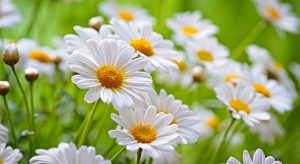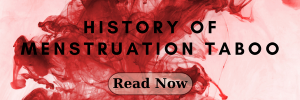As the lunar cycle waxes and wanes, we find ourselves entwined with the ebb and flow of the mystical feminine energy. The menstrual cycle. Today, let us embark on a journey through the veils of time, unearthing the ancient wisdom of our ancestors who harnessed the power of enchanting herbs to soothe the rhythmic dance of menstruation. In our exploration, we shall uncover the secrets of plants that offer relief from pain, regulate the crimson tide, and restore balance to our bodies during this sacred time. Let the incantations begin!
Best Herbs For Period Cramps
For centuries, women have turned to the powers of Mother Nature to relieve menstrual pain, regulate bleeding, and restore balance. By exploring ancient cultures, we unveil time-tested, enchanting herbs for menstrual pain that can still provide us solace today.
Cramp Bark (Viburnum opulus)
Cramp Bark, as the name suggests, has long been a go-to herb for easing menstrual cramps. Celtic and Slavic cultures revered this plant, using its bark in decoctions to soothe uterine contractions and alleviate pain (1).
Ginger (Zingiber officinale)
Ginger is an ancient herb with origins in China and India. Traditional Chinese Medicine (TCM) and Ayurveda, the Indian healing system, have used ginger for centuries to treat menstrual pain by improving blood circulation and reducing inflammation (2).
Chamomile (Matricaria chamomilla)

Chamomile, an herb cherished by Ancient Egyptians and Greeks for its calming effects, can also ease menstrual cramps. This delightful plant works by relaxing the muscles of the uterus, which in turn diminishes pain (3).
Herbs to Reduce Menstrual Bleeding
These enchanted plants, steeped in ancient wisdom, possess the power to lessen the flow of our crimson river, allowing us to find solace in their soothing embrace.
Lady’s Mantle (Alchemilla vulgaris)
Ancient Europeans used Lady’s Mantle for its astringent properties, which help to constrict blood vessels and reduce excessive menstrual bleeding (4). The herb’s name pays homage to the Virgin Mary, as its shape resembles her mantle.
Yarrow (Achillea millefolium)
Yarrow is another powerful herb with astringent properties. Native Americans and ancient Greeks used this versatile plant to treat a wide range of ailments, including heavy menstrual bleeding. Its ability to contract blood vessels makes it an effective remedy (5).
Herbs to Stop Bleeding
With a flick of nature’s wand, we now unveil the alchemy of herbs that wield the power to halt the crimson cascade, offering us respite and restoration during our monthly lunar dance.

Shepherd’s Purse (Capsella bursa-pastors)
Shepherd’s Purse is an ancient herb known for its hemostatic properties, which help stop bleeding. Traditional Chinese Medicine has long utilized this herb to treat various bleeding disorders, including excessive menstruation (6).
Witch Hazel (Hamamelis virginiana)
Witch Hazel, a beloved plant among Native American tribes, contains tannins, making it a potent astringent. Its ability to constrict blood vessels can effectively stop bleeding during menstruation (7).
The enchanting world of herbal remedies offers a wealth of wisdom for those seeking menstrual relief. By embracing the ancient knowledge of these powerful herbs, we can alleviate our discomforts and honor the sacred connection between Mother Nature and our bodies. Always consult with a healthcare professional before incorporating new herbs into your self-care rituals.
References:
- Filipendula, R. (2017). Cramp Bark: An Ancient Remedy for Menstrual Cramps. Herbal Academy. Retrieved from [source].
- Chen, C. X., Barrett, B., & Kwekkeboom, K. L. (2016). Efficacy of oral ginger (Zingiber officinale) for dysmenorrhea: A systematic review and meta-analysis. Evidence-Based Complementary and Alternative Medicine, 2016. Retrieved from [source].
- Srivastava, J. K., Shankar, E., & Gupta, S. (2010). Chamomile: A herbal medicine of the past with a bright future. Molecular Medicine Reports, 3(6), 895-901. Retrieved from [source].
- Kucera, R., & Payer, J. (2017). Alchemilla vulgaris L. in the treatment of menorrhagia: A cross-sectional study. European Journal of Integrative Medicine, 12, 94-98. Retrieved from [source].
- Chevallier, A. (2000). Encyclopedia of herbal medicine: The definitive home reference guide to 550 key herbs with all their uses as remedies for common ailments. London: Dorling Kindersley.
- Ma, Y., Guo, Y., Liu, Y., & Gao, Y. (2016). Capsella bursa-pastoris (L.) Medik: Ethnobotany, phytochemistry, and pharmacological activities. Journal of Ethnopharmacology, 194, 20-38. Retrieved from [source].
- Thring, T. S., Hili, P., & Naughton, D. P. (2011). Antioxidant and potential anti-inflammatory activity of extracts and formulations of white tea rose, and witch hazel on primary human dermal fibroblast cells. Journal of Inflammation (London, England), 8(1), 27. Retrieved from [source].
